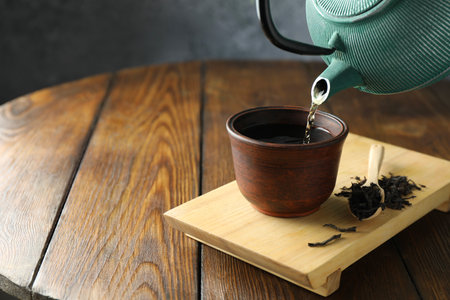A Brewed Heritage: The British Love Affair with Tea
In Britain, tea is more than just a beverage—it’s a daily ritual woven into the very fabric of life. From the gentle clink of china cups at breakfast tables to the comforting steam curling from chipped mugs during work breaks, tea underpins moments both grand and ordinary. The teapot, often passed down generations, holds more than leaves; it cradles stories, warmth, and a sense of belonging. The cherished institution of afternoon tea—complete with delicate sandwiches, scones crowned with jam and clotted cream, and an array of cakes—elevates this tradition to an art form. Whether savoured in bustling city cafés or cosier home settings, the act of brewing and sharing tea remains a testament to British identity. As we explore the intersection between classic teapot rituals and the emerging appreciation for filter coffee methods like Chemex, we begin to see how these worlds can harmoniously blend, inviting us to reimagine our relationship with daily brews.
2. The Chemex Arrival: Coffee’s Modern Renaissance
If the British teapot has long been a symbol of comfort and conviviality, then the Chemex stands as a sleek ambassador of coffee’s contemporary revival. The story of filter coffee’s arrival in Britain is one of subtle revolution—a gentle shift rather than a storm, mirroring the steady drizzle on a London afternoon. While tea has always been the beating heart of British culture, with its rituals woven into everything from office breaks to family gatherings, the slow emergence of filter coffee marked a nuanced change in both taste and tempo.
It was not so much an invasion as it was a quiet infiltration. In the post-war years, British cafés began to flirt with continental habits; espresso machines hummed alongside battered kettles, and soon enough, curiosity about alternative brewing methods took root. By the late 20th century, devices like the Chemex—an hourglass-shaped vessel designed for clarity and ritual—found their way onto the countertops of trendsetting cafés from Shoreditch to Glasgow. With its minimalist design and focus on pour-over precision, the Chemex appealed to a new generation seeking more than just caffeine—a meditative experience akin to that of making a proper cuppa.
| Tradition | Teapot (Tea) | Chemex (Filter Coffee) |
|---|---|---|
| Brewing Ritual | Leaves steeping in hot water, often shared from one pot | Grounds gently infused via manual pour-over, single or shared servings |
| Social Setting | Family gatherings, afternoon tea, work breaks | Artisan cafés, home brunches, creative meetings |
| Iconic Image | Ceramic or silver teapot on a tray | Borosilicate glass Chemex beside artisanal mugs |
| Taste Profile | Smooth, mellow; emphasis on blends and traditionals like Earl Grey or Assam | Crisp, clean; highlights single-origin beans and subtle notes |
The Chemex didn’t just bring a new way to brew; it invited Brits to pause and appreciate nuance. Where once tea ruled unchallenged, filter coffee carved out its own enclave—less about replacing old rituals and more about expanding them. The Chemex became emblematic of urban Britain’s thirst for reinvention: a nod to craftmanship and curiosity amid the city’s constant reinvention. For many Londoners and Mancunians alike, reaching for a Chemex in the morning now sits comfortably beside the centuries-old call for “a nice cuppa,” each ritual steeped in its own quiet poetry.
![]()
3. Techniques Meet Tradition: Brewing Principles Shared
If you’ve ever found yourself marvelling at the ritual of a British tea service or the slow, meditative pour-over dance with a Chemex, you’ll know that both worlds share more than a hint of ceremony. At first glance, the teapot and Chemex might seem like chalk and cheese—one steeped in centuries of British tradition, the other radiating modern, minimalist design. Yet, look closer, and you’ll find a shared devotion to technique, timing, and the quiet artistry of extraction.
Steeping and Timing: The Heartbeat of Flavour
In the British tea canon, the classic teapot is much more than an ornament on a Sunday afternoon table. The steeping process—typically three to five minutes for black teas—is an act guided by patience and intuition. Too short, and your cuppa lacks body; too long, and it veers into tannic territory. Enter the Chemex: here, timing isn’t just a suggestion but an exact science. A blooming phase followed by slow, steady pours over four to five minutes allows coffee to reveal its nuanced layers. Whether it’s Assam leaves unfurling in rolling boil water or ground beans yielding to gravity’s pull, the underlying principle is clear—a considered approach yields a cup worth savouring.
Equipment: From Porcelain Curves to Glass Lines
Both traditions take their tools seriously. British teapots—often bone china or robust ceramic—are designed for heat retention and gentle pouring. The Chemex, all hourglass elegance and laboratory chic, is equally intentional; its thick filter papers and borosilicate glass ensure clarity in every sip. While the aesthetics diverge—Victorian florals versus Bauhaus simplicity—the care invested in each vessel speaks volumes about cultural values: comfort and continuity for tea, clarity and precision for coffee.
Craftsmanship in Every Cup
The magic happens not just in what you brew but how you brew it. Both methods demand a mindfulness that borders on meditative—a pause from the city’s relentless pace. Whether you’re nestled in a London flat or tucked away in a café along Brick Lane, there’s an unspoken understanding: quality comes from intention. The techniques may differ, but the soul of each lies in elevating everyday moments into rituals of taste and care.
4. Taste and Terroir: Palates Across the Pond
If you wander through a British high street, you’ll sense it: an unspoken reverence for flavour that is both nuanced and distinctive—a taste landscape shaped by drizzle, history, and a love for subtlety. The British palate, honed over centuries of sipping Assam or Darjeeling from porcelain teapots, naturally seeks out balance and character in every cup. But as filter coffee finds its place on café menus beside the stalwart pot of tea, these flavour expectations begin to ripple into new territories.
The journey from teapot to Chemex isn’t just about swapping vessels; it’s about translating an appreciation for terroir—the soil, climate, and craftsmanship behind every leaf or bean. While traditional British teas often highlight malty, floral, or brisk profiles, the burgeoning specialty coffee scene brings with it tasting notes of citrus, stone fruit, or even dark chocolate. Yet, at their core, both worlds are connected by a shared desire to taste place and process.
Let’s break down how British taste preferences inform choices in both tea and coffee:
Beverage |
Preferred Flavour Notes |
Terroir Influence |
Typical Brewing Rituals |
|---|---|---|---|
| Black Tea (e.g., English Breakfast) | Malty, robust, comforting | Indian & Sri Lankan highlands impart depth and brightness | Steeped in teapot with milk; savoured slowly |
| Earl Grey | Citrus (bergamot), floral hints | Bergamot oil over classic Ceylon base; aromatic elegance | Served black or with a slice of lemon; afternoon ritual |
| Filter Coffee (Chemex/V60) | Clean acidity, fruity or nutty undertones | Ethiopian or Colombian beans express regional characteristics | Poured with precision; sipped black to appreciate complexity |
| Flat White / Latte Art Coffee | Creamy texture, balanced sweetness | Blend of beans highlights smoothness over sharpness | Crafted by barista; enjoyed as social staple in indie cafés |
The British knack for subtlety means neither bitterness nor overpowering flavours dominate—whether in a builder’s brew or a single-origin pour-over. Instead, there’s an unhurried curiosity to discover layers: a lingering aftertaste of malt in tea or an unexpected berry note in coffee. This sensitivity to nuance is what makes the British approach unique; it’s not about chasing trends but weaving tradition into modern tastes. So whether you cradle a mug of Yorkshire Gold or nurse a meticulously brewed filter roast, you’re partaking in an evolving ritual—one that celebrates both heritage and the thrill of discovery.
5. From Kitchen to Corner Café: The Blending of Cultures
Wander through the winding streets of London or Manchester, and you’ll spot a curious evolution in the city’s independent cafés—one where British tea culture subtly entwines with the artistry of filter coffee. It’s not just about swapping a teapot for a Chemex; it’s about how centuries-old rituals are being reimagined for a modern palate, right at the neighbourhood café. What was once reserved for the quietude of home kitchens—the gentle patience of steeping loose-leaf tea—now echoes in the slow bloom and pour-over methods behind the counter. British baristas have adopted filter coffee techniques not merely as an imported novelty, but as a canvas for expressing local character. The same care that goes into brewing a proper pot of Earl Grey—a respect for temperature, timing, and tradition—is mirrored in their approach to hand-crafted coffee. There’s an unspoken kinship between the kettle and the carafe; both invite us to pause, observe, and savour.
The Ritual of Pause
In these cafés, rituals converge. The act of waiting for water to reach just the right temperature is reminiscent of watching leaves unfurl in a porcelain pot. Conversations between baristas and regulars often drift from beans to blends, from coffee origins to family tea stories. Here, the British love for ceremony meets the global enthusiasm for specialty coffee—each cup brewed becomes an invitation to linger a little longer.
A New Kind of Third Place
These corner cafés have become more than just stops for caffeine fixes; they’re modern-day parlours where old and new ways commingle. Filter coffee isn’t just prepared—it’s presented with the same flourish as afternoon tea service, sometimes accompanied by locally baked scones or shortbread. The spirit of British hospitality remains: no rush, no fuss, just the gentle hum of conversation and the aroma of fresh brews drifting out onto rain-soaked pavements.
Urban Alchemy
The result is an urban alchemy unique to Britain—a blend where Scandinavian-inspired minimalism meets English cosiness, where Chemexes sit alongside classic teapots on reclaimed wood counters. In this cultural cross-pollination, both traditions are honoured and elevated. Whether you’re sipping a single-origin pour-over or sharing a pot among friends, each ritual speaks to a city that knows how to make space for both heritage and innovation in every cup.
6. Bridging Brews: The Future of British Beverage Culture
If we gaze into the not-so-distant future, a fascinating picture emerges at the crossroads of teapots and Chemex. As British palates evolve and social rituals adapt, the divide between tea and coffee culture grows ever fainter—more a gentle blending than a sharp distinction. In city cafés from Shoreditch to Edinburgh’s West End, you’ll spot friends gathered over pots of single-origin loose leaf and meticulously brewed pour-overs alike, chatting about everything from poetry to politics. The lines blur further at home, as kitchen shelves make room for both vintage teapots and sleek hand-grinders, reflecting a new openness in British tastes.
This cross-pollination isn’t just about flavour; it’s deeply social. Where once afternoon tea was reserved for dainty sandwiches and whispering china cups, today’s gatherings might swap Earl Grey for an ethically sourced Guatemalan filter or even combine the two in inventive infusions. British beverage culture is becoming more about the ritual of coming together—the ceremony of brewing, pouring, and sharing—than strict allegiance to one drink or another.
Looking ahead, sustainability and provenance will likely play a starring role. With growing awareness of where our leaves and beans come from, there’s a quiet pride in supporting small-scale producers, whether that’s a family-run Assam estate or an independent London roastery. This shift signals not just a change in what we drink but how we connect—to our communities, to global traditions, and to the stories behind each cup.
Ultimately, Britain’s unique ability to absorb new influences while honouring tradition means that the teapot and Chemex will continue their dance—sometimes side by side on café counters, sometimes mingling in surprising new brews. The future of British beverage culture promises not just innovation but also conversation: an open invitation to pause, savour, and sip together.


